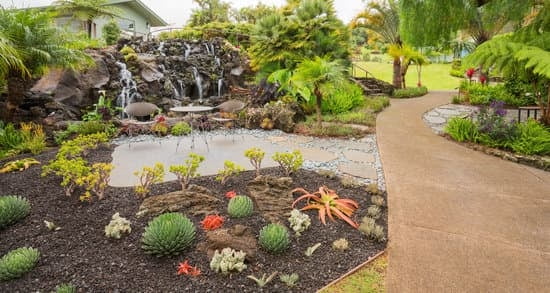Are you looking for creative and practical backyard gardening ideas for growing your own vegetables? From choosing the right vegetables to designing your garden layout, there are plenty of factors to consider when embarking on this rewarding and sustainable venture.
This article will provide you with valuable tips and insights on how to maximize your backyard space to grow a bountiful vegetable garden. Whether you have a spacious outdoor area or limited space in an urban environment, there are innovative solutions to suit every gardener’s needs.
When it comes to backyard gardening ideas, vegetables are a popular choice for many home gardeners. Not only are they nutritious and delicious, but they also offer the satisfaction of growing your own food.
In this article, we will explore the best practices for choosing the right vegetables for your garden, as well as planning and designing the layout to optimize space and sunlight. We’ll also cover soil preparation, fertilization tips, planting techniques, pest management, harvesting methods, and creative ideas for small spaces or urban environments.
With the rise of sustainable living and self-sufficiency movements, backyard gardening has become increasingly popular. Many people are embracing the idea of growing their own vegetables right in their own backyards. In addition to providing fresh produce for your family, it’s also a great way to connect with nature and reduce your carbon footprint.
Whether you’re new to gardening or have some experience already, there’s always something new to learn when it comes to cultivating a flourishing vegetable garden right at home. So let’s dive into the world of backyard gardening ideas.
Choosing the Right Vegetables for Your Backyard Garden
When it comes to choosing the right vegetables for your backyard garden, there are several factors to consider. First and foremost, it’s important to think about what vegetables you and your family enjoy eating. This will ensure that you get the most out of your garden and avoid wasting time and resources on plants that may go to waste.
Another important consideration is the climate in which you live. Different vegetables thrive in different environments, so be sure to choose varieties that are well-suited to your local climate. For example, leafy greens like lettuce and spinach tend to do well in cooler temperatures, while tomatoes and peppers prefer warmer weather.
In addition to personal preferences and climate considerations, it’s also a good idea to choose vegetables that are relatively easy to grow for beginners. Some great beginner-friendly options include cucumbers, zucchini, green beans, and radishes. These vegetables are fairly low-maintenance and can be very rewarding for novice gardeners.
| Vegetable | Best Climate |
|---|---|
| Lettuce | Cooler temperatures |
| Tomatoes | Warmer weather |
| Cucumbers | Warm weather |
| Zucchini | Warm weather |
When selecting vegetables for your backyard garden, keep in mind the space you have available as well as any unique features of your garden such as sunlight exposure or soil type. By taking all these factors into account, you can ensure a successful and bountiful harvest of homegrown vegetables.
Planning and Designing Your Vegetable Garden Layout
When it comes to planning and designing your vegetable garden layout, there are several factors to consider in order to maximize the space and potential of your backyard gardening ideas. Here are some key tips for creating an efficient and productive vegetable garden:
1. Assess Your Space: Take a good look at your backyard or outdoor space and determine the amount of available space you have for your vegetable garden. Consider the amount of sunlight, shade, and any potential obstacles such as trees or structures that may impact the layout of your garden.
2. Consider Companion Planting: One effective way to make the most of your vegetable garden layout is by incorporating companion planting techniques. This involves planting different types of vegetables together that can benefit from each other’s natural properties, such as repelling pests or providing nutrients to the soil.
3. Optimize Plant Spacing: It’s important to carefully plan the spacing between each vegetable plant in order to ensure proper air circulation, access to sunlight, and adequate room for growth. Utilize tools such as planting guides or spacing recommendations from seed packets or gardening resources to determine the ideal distance between plants.
4. Utilize Raised Beds or Containers: If you have limited space or poor soil quality in your backyard, consider utilizing raised beds or containers for your vegetable garden. Not only do they provide better control over soil quality and drainage, but they can also be positioned in areas with optimal sunlight.
By taking these considerations into account when planning and designing your vegetable garden layout, you can create a well-organized and efficient space for growing a variety of delicious homegrown vegetables right in your own backyard. Whether you have a small urban environment or ample outdoor space, incorporating these strategies will help you make the most out of your backyard gardening ideas vegetables.
Soil Preparation and Fertilization Tips for a Successful Harvest
One of the most important aspects of having a successful backyard garden is ensuring that your soil is properly prepared and fertilized. Before planting any vegetables, it is crucial to test the pH level of your soil. Most vegetables prefer a slightly acidic soil with a pH level between 6.0 and 6.8. If necessary, you can adjust the pH level by adding lime to raise it or sulfur to lower it.
In addition to pH levels, it’s also important to ensure that the soil is well-draining and nutrient-rich. Adding organic matter such as compost or well-rotted manure can help improve the structure and fertility of the soil. This will provide essential nutrients for your vegetable plants to thrive.
When it comes to fertilization, choosing high-quality organic fertilizers can make a significant difference in the health and productivity of your vegetable garden. Organic fertilizers not only provide essential nutrients for plant growth but also improve the overall structure and fertility of the soil, leading to healthier plants and better yields.
Here Are Some Key Factors to Consider When Preparing
| Factor | Consideration |
|---|---|
| pH Level | Test and adjust pH level if necessary |
| Soil Texture | Ensure well-draining and nutrient-rich soil |
| Fertilization | Choose high-quality organic fertilizers for healthier plants |
By following these soil preparation and fertilization tips, you can create an optimal growing environment for your vegetable garden, leading to a bountiful harvest of homegrown produce.
Best Practices for Planting and Watering Your Vegetable Garden
Planting Your Vegetable Garden
When it comes to planting your vegetable garden, it’s essential to consider the spacing between plants. Overcrowding can lead to competition for nutrients and sunlight, resulting in stunted growth and decreased yield. Be sure to follow the recommended spacing guidelines for each type of vegetable you are growing. Additionally, consider intercropping, which involves planting different types of vegetables together to maximize space and promote natural pest control.
Watering Your Vegetable Garden
Proper watering is crucial for the success of your backyard gardening ideas vegetables. The frequency and amount of water will depend on various factors such as the type of soil, weather conditions, and the specific needs of each vegetable plant.
Generally, it’s best to water deeply and less frequently to encourage strong root development. It’s also important to water in the morning or early evening to reduce evaporation and allow foliage to dry before nighttime, reducing the risk of disease.
Using Mulch for Water Conservation
Mulching is an effective way to conserve water in your vegetable garden. Applying a layer of organic mulch such as straw or wood chips around your plants helps retain moisture in the soil, reduces weed growth, and regulates soil temperature. This not only conserves water but also minimizes the time and effort needed for watering.
By following these best practices for planting and watering your vegetable garden, you can ensure a bountiful harvest while conserving resources and promoting healthy plant growth. Keep in mind that observing your plants’ individual needs and making adjustments as necessary is key to successful backyard gardening ideas vegetables.
Pest and Disease Management for Vegetable Plants
When it comes to maintaining a healthy and thriving backyard garden, it’s crucial to address potential pest and disease issues that may arise. Here are some essential tips for effectively managing pests and diseases in your vegetable plants:
1. Identify common pests and diseases: Familiarize yourself with the most common pests and diseases that can affect vegetable plants in your area. Look out for signs of infestation or infection, such as yellowing leaves, holes in foliage, or wilting plants.
2. Implement natural pest control methods: Instead of resorting to chemical pesticides, consider using natural remedies to control pests in your backyard garden. For instance, you can introduce beneficial insects like ladybugs or lacewings to prey on harmful pests, or use neem oil as a natural insect repellent.
3. Practice crop rotation: Rotating your vegetable crops from year to year can help prevent the build-up of soil-borne diseases and discourage pests from becoming established in your garden. Plan out a crop rotation schedule to ensure that you rotate crops effectively.
4. Monitor plant health regularly: Keep a close eye on the overall health of your vegetable plants by inspecting them regularly for any signs of pest infestation or disease. By catching issues early on, you can take prompt action to mitigate the impact on your garden.
By implementing these pest and disease management practices, you can significantly reduce the risk of losing your valuable vegetable crops to unwanted pests or diseases in your backyard gardening endeavors.
Harvesting and Preserving Your Homegrown Vegetables
After all the hard work of planning, planting and caring for your vegetable garden, it’s finally time to reap the rewards of your labor by harvesting your homegrown vegetables. Whether you’re a seasoned gardener or a beginner, knowing when and how to harvest your vegetables is essential to getting the best taste and texture from your produce.
Timing Is Key
Knowing when to harvest your vegetables is crucial, as picking them at the right time ensures maximum flavor and nutritional value. Different vegetables have different indicators for optimal harvesting. For example, tomatoes should be picked when they are fully colored but still firm, while root vegetables like carrots are ready when they reach their mature size. Make sure to do some research about the specific vegetables you’re growing to determine the best time for harvest.
Preserving Your Bounty
Once you’ve harvested your homegrown vegetables, it’s important to properly store and preserve them to extend their shelf life and enjoy them throughout the year. There are various methods for preserving vegetables such as canning, pickling, freezing, dehydrating and fermenting. Each method has its own advantages and is suitable for different types of vegetables. By preserving your homegrown produce, you can savor the flavors of summer well into the winter months.
Sharing Your Harvest
Harvesting an abundance of homegrown vegetables often leads to having more produce than you can consume on your own. Consider sharing your harvest with friends, family or neighbors who may appreciate fresh produce. You can also donate surplus goods to local food banks or community organizations. Sharing the fruits of your labor not only helps reduce waste but also fosters a sense of community and generosity in your neighborhood.
Remember that harvesting and preserving your homegrown vegetables is a fulfilling part of backyard gardening that allows you to enjoy the fruits of your labor long after the growing season ends. With proper timing and preservation techniques, you can continue enjoying fresh, flavorful produce from your backyard garden all year round.
Creative and Unique Backyard Gardening Ideas for Small Spaces or Urban Environments
For those who may not have access to a large backyard or rural area, there are still plenty of options for growing your own vegetables. With the right creativity and planning, urban environments or small spaces can be transformed into flourishing vegetable gardens. One of the most popular backyard gardening ideas vegetables is to utilize vertical gardening techniques.
Vertical gardening allows you to make the most of your available space by growing plants upwards rather than outwards. This can be achieved by using trellises, hanging planters, or wall-mounted containers to maximize the use of vertical space.
Another creative way to optimize limited space for a vegetable garden is by utilizing containers or raised beds. Container gardening allows you to grow a variety of vegetables in pots, crates, or other types of containers. This method is especially convenient for urban environments where traditional gardening space may be scarce. Raised beds are also an excellent option as they provide better soil drainage and prevent soil compaction, which can lead to healthier vegetable plants.
When considering small spaces for vegetable gardening, it’s important to choose crops that are well-suited for confined areas. Options such as lettuce, spinach, radishes, and herbs are ideal for container or raised bed gardening due to their compact growth habits. Additionally, consider combining decorative elements with functional planters to add beauty and greenery to your urban environment while enjoying the benefits of homegrown produce.
By thinking outside the box and utilizing innovative backyard gardening ideas vegetables like vertical gardening techniques and container gardening, even those with limited space can enjoy the rewards of growing their own fresh vegetables at home. Whether you have a small balcony in an apartment building or a tiny backyard in a city townhouse, there are numerous ways to create a thriving vegetable garden that suits your unique living situation.
Utilizing Vertical Gardening Techniques for Limited Space
Limited space should not deter anyone from enjoying the benefits of growing vegetables. Vertical gardening is an innovative solution for those who have limited space in their backyard or live in urban environments. This technique allows you to maximize your vertical space and grow a variety of vegetables without needing a large area for traditional gardening.
One of the key benefits of vertical gardening is the ability to grow more plants in a smaller footprint. By utilizing walls, trellises, or hanging containers, you can create a lush and productive garden even in the smallest of spaces. This method also makes it easier to care for your plants as they are more accessible for watering, pruning, and harvesting.
When choosing which vegetables to grow vertically, it’s important to select varieties that thrive in this type of environment. Vining plants such as tomatoes, cucumbers, pole beans, and peas are ideal for vertical gardening as they naturally climb and spread out. Additionally, compact varieties of lettuce, spinach, and herbs can also be grown vertically in small containers or wall-mounted planters.
In addition to providing a bountiful harvest, vertical gardens can also serve as an aesthetic focal point in your backyard. With some creative planning and design, you can turn an ordinary wall or fence into a stunning display of greenery and produce. Vertical gardening truly offers endless possibilities for creating a beautiful and functional vegetable garden in even the most constrained spaces.
Growing Vegetables in Containers or Raised Beds for Convenience and Accessibility
In conclusion, backyard gardening ideas for growing vegetables can be both rewarding and practical. By selecting the right vegetables, planning and designing your garden layout, and preparing the soil properly, you can ensure a successful harvest. Implementing best practices for planting, watering, and pest management will help you maintain healthy vegetable plants throughout the growing season.
For those with limited space or urban environments, there are creative and unique options available for backyard gardening. Utilizing vertical gardening techniques allows you to maximize space and grow a variety of vegetables. Additionally, growing vegetables in containers or raised beds provides convenience and accessibility for gardeners with limited mobility or space constraints.
Overall, incorporating these backyard gardening ideas for growing vegetables into your own garden can provide an abundance of fresh produce while also promoting a healthy and sustainable lifestyle. Whether you have a spacious backyard or a small urban patio, there are opportunities to cultivate your own homegrown vegetables and enjoy the rewards of a bountiful harvest. With careful planning and dedication, anyone can experience the joys of growing their own food right in their own backyard.
Frequently Asked Questions
What Is a Good Layout for a Vegetable Garden?
A good layout for a vegetable garden includes considering the sunlight, water access, and spacing requirements for each plant. Raised beds or rows with clear paths between them are common layouts that help maximize space and make maintenance easier.
What Vegetables Can You Grow in a Backyard Garden?
In a backyard garden, you can grow a variety of vegetables such as tomatoes, peppers, lettuce, carrots, zucchini, cucumbers, and herbs like basil and parsley. It’s important to consider your climate and the specific needs of each plant before deciding what to grow.
What Is an Easy Vegetable Gardening Idea?
An easy vegetable gardening idea is to start with container gardening. This allows you to control the soil quality and drainage while also making it easier to move plants around based on sunlight and weather conditions. Container gardening is also a great option for those with limited space or poor soil quality in their backyard.

Welcome to my gardening blog! I am passionate about plants and enjoy sharing my knowledge and experiences with others. In this blog, I will write about everything related to gardening, from tips on how to get started to updates on my own garden projects.





